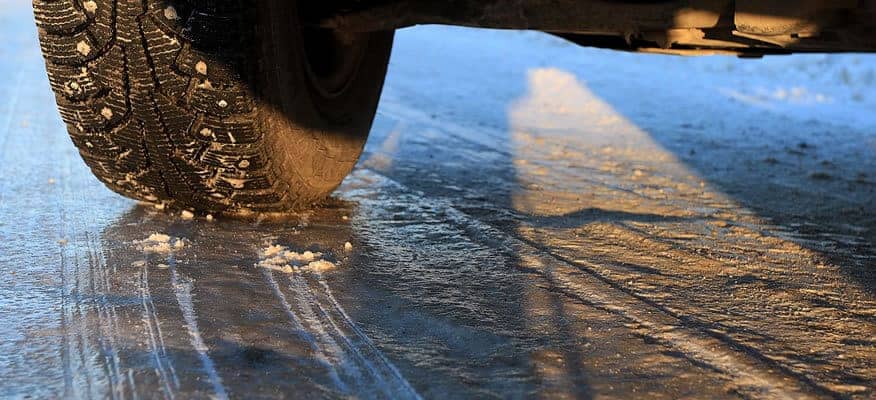Much to our dismay and to the chagrin of all our snow removal company clients, we’re having a more mild winter than usual all across the U.S. this year, especially where we’re located in Washington DC and Maryland – thanks to El Niño. That means where you normally might expect to see snow, this year we are seeing a lot of rain – which can become black ice. Temperatures will still dip below zero at night, so while you might not see large snow banks build up, it’s important not to forget how to deal with less visible winter hazards, like black ice.
What is black ice?
Black ice isn’t actually black, but it might appear that way when it falls on black pavement because it’s clear. Its clear appearance, instead of looking white, is due to the lack of air bubbles that get trapped inside the ice. Snow appears white because snowflakes don’t pack densely together and the surface refraction gradient difference between water and air cause us to see the transition point, making it appear white. There’s so much surface area in snow that the ice appears completely white and, because there’s so much air, it feels fluffy.
Why is black ice so hard to see?
When rain falls and doesn’t freeze until after it hits the cold ground, you won’t see air bubbles in the ice. The only surface transition you’ll see between water and air is the surface of the ice, so it might just look like a patch of wet ground. When ice doesn’t even look like ice but just looks like water on the ground or might not even appear obviously wet at all, that’s when we call it black ice. It’s particularly treacherous because of our difficulty identifying it before we’re standing or slipping right on top of it. Black ice can also make driving at night particularly dangerous.
What causes black ice?
Black ice often occurs when ambient temperatures are above zero. Remember, if water freezes while it’s falling we get snow, but if it’s not cold enough outside, like we expect to see this year, we get rainfall instead of snowfall. If, however, the ground is still cold and resting at below-zero temperatures, like we’ll see late at night and in the early morning from the previous night’s chill, that water will freeze when it hits the ground. These are the conditions we’re going to see often across the U.S. this year.
What’s the best way to deal with black ice?
In spite of the mild winter we’re having this year, prepare to see rainfall and cold ground temperatures combining to form hazardous roads and walkways. Help your customers prepare for black ice by informing them about the associated hazards and causes and be sure to stock up on ice melting chemicals before it catches you off guard. We even encourage you to share this post on your social media pages. For more information on the unique hazards we’re all going to face during this rainy winter or to make sure you have the right ice melt on hand to combat black ice, please contact us.

